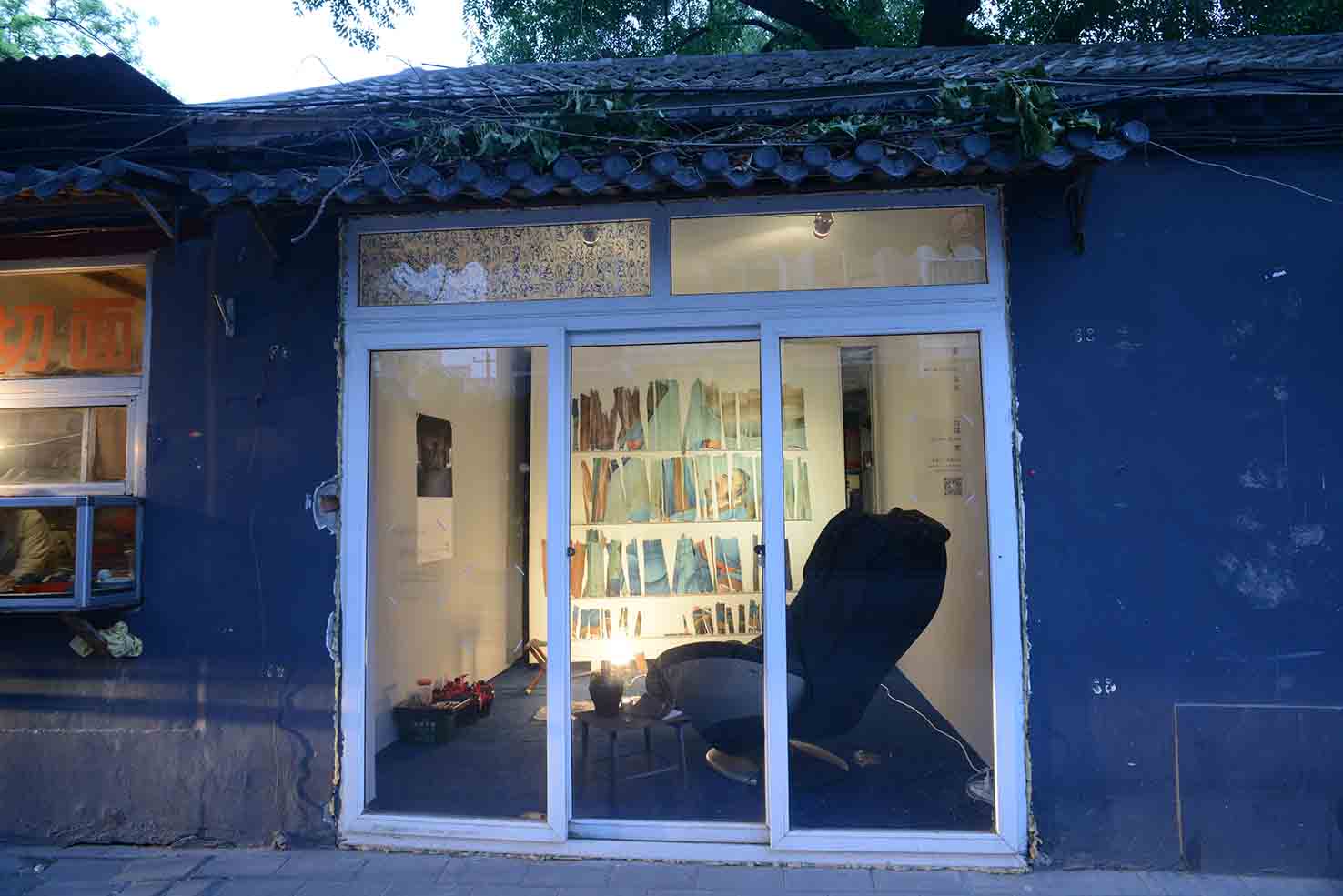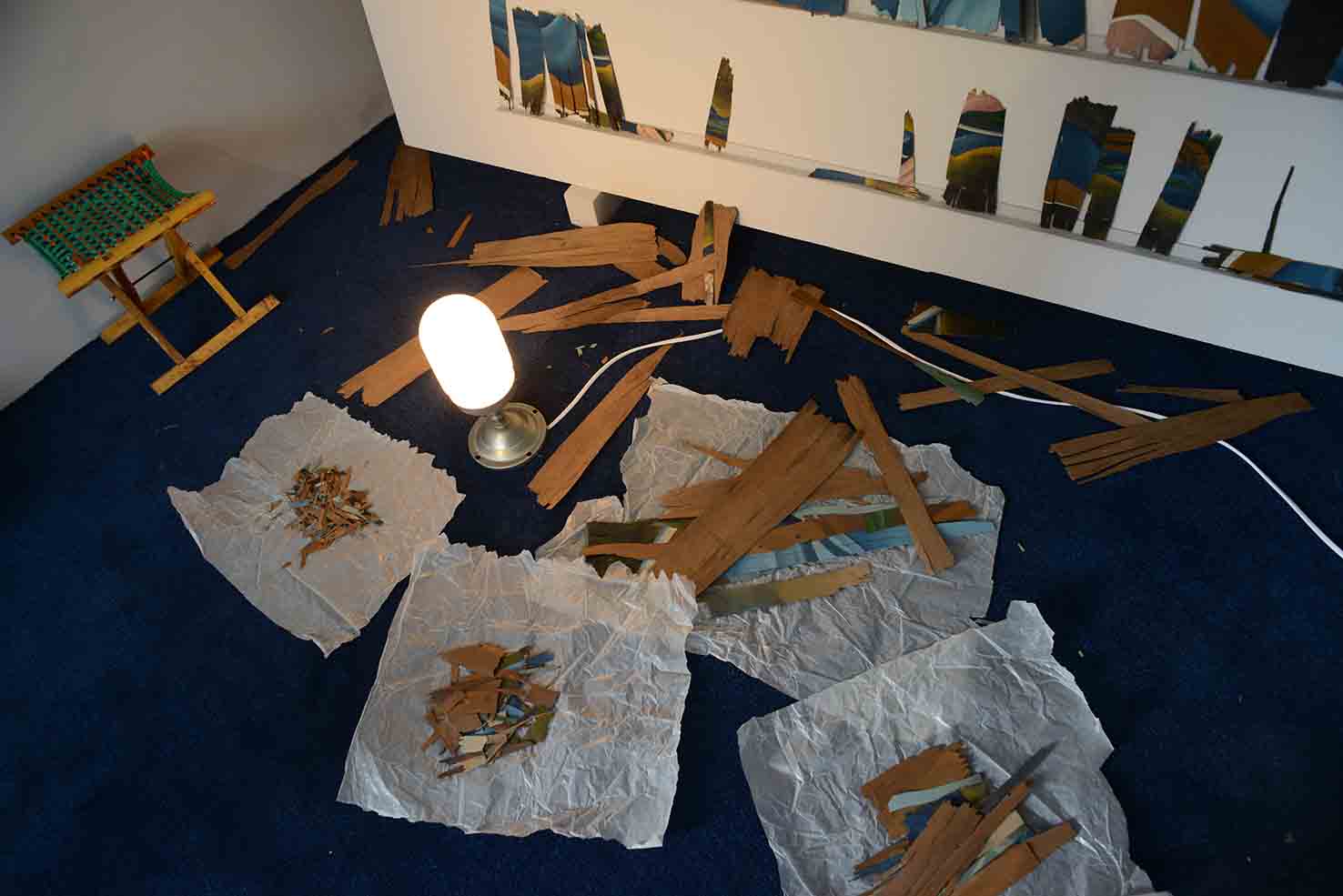| 项目 projects |
关于 about |
新闻 news |
媒体报道 press |
赞助 support |
地图 map |
联系 contact |
箭厂胡同38号(国子监街内) |
 |
勾践·考叶伟立, 李墨+小孔 |
箭厂空间在此荣幸地宣布台北艺术家叶伟立和北京建筑师李墨+小孔的最新装置作品亮相登场。勾践·考源于一个一直在发展的故事,这个故事穿越了古代和现当代的历史,涉及了领地的争斗与另辟蹊径的人生轨迹。故事始于公元前5世纪越王勾践的一幅肖像画,艺术家于2005年在高雄一座废弃的军事单位里发现了这幅画。作为古代越国国王,勾践的名字就有转败为胜之意,从明清起直到20世纪,领袖们都将其视为励志图强的典范。越国战败后,遭受凌辱的勾践用20年的时间卧薪尝胆反败为胜,国民党政府借用这个故事来形容台湾与大陆之间的纷争,叶伟立深受启发,慢慢对画发生兴趣,并开始将其融入自己的摄影作品当中。他在这个过程中让木质的画幅自然腐化变形,斑驳碎片中,破败的画面在箭厂里再次呈现,被放置在一些其它的物品旁边,在这当中是一台电动按摩椅,这是政府机关送给李墨的祖父—一位离休老干部的节日福利。这些物品将一个有关复兴的故事与一组新的当代物品联系在一起,这把椅子也半真半假地意指勾践所遭受的艰辛困苦,忍辱负重和坚忍不拔的品质。 勾践·考是由两岸艺术家—台湾的叶伟立和北京的李墨+小孔特意为箭厂所共同打造。三人的共同创作佐证了他们平行却彼此隔离的历史轨迹,叶,李,孔,三人此次有意将历史的兴亡盛衰续写进箭厂,因这里的所在之处,历史上也曾是官府的管辖重地。
叶伟立 1971年出生於台湾,1982年时,年仅十一的叶伟立移民美国,至2002年始返台定居。叶伟立於1990年代开始国际性的作品展出,并於1997年取得美国罗德岛设计学院之摄影硕士学位。长期以来,透过对自身与所居住城市之持续关注,叶伟立以其多样的摄影与文字创作,探索集体实践中的个人动力及所喻含之个体与政治社会学的关係对应。叶伟立作品目前由香港汉雅轩画廊代理,现定居与工作於台湾杨梅。 李墨 + 小孔 中国美术学院博士生,书写建筑工作室建筑师。书写建筑致力于思考与探索介于理论思辨与建造技艺之间的,带有书写意涵的中国新传统与新乡土建筑艺术设计的可能性。作品“违章三法:台北都市违章研究”作为“朗读违章:王澍X谢英俊建筑展”之一部分于2011年在台北展出,作为 “Eastern Promises: Contemporary Architecture and Spatial Practices in East Asian ”之一部分于2013年在维也纳MAK展出。 |
Go Jian Quest
Wei-Li Yeh, Li Mo and Kong
Arrow Factory is proud to announce a new installation by Taipei-based artist Wei-Li Yeh and Beijing-based architects Li Mo and Kong. The collaborative work Go Jian Quest emerges from an evolving narrative that traverses ancient and modern histories, conflicted territories and idiosyncratic personal trajectories. The story begins with a painting of a 5th century BCE King Go Jian that the artist found in an abandoned military compound in Kaohsiung in 2005. A king of the Yue State in ancient China, Go Jian’s name is synonymous with the conquering of one’s enemy and as such has served as a rallying call for leaders from the Ming and Qing dynasties up through the 20th century. Struck by the ways in which Go Jian’s narrative—a story that begins with him suffering defeat and humiliation at the hands of his enemy and ends with bitter strategizing for 20 years to conquer them successfully—was co-opted by the Kuomintang government to articulate the struggle between the island and the mainland, Yeh grew fascinated with the painting and began to incorporate it into his photographic works. Over time Yeh has allowed the wood-based painting to deteriorate naturally. Now in tattered fragments, pieces of the painting have been resurrected inside Arrow Factory and situated alongside additional objects that link its narrative of revival and renewal to a new set of contemporary registers. Among these is an electric massage chair, a gift bestowed to Li Mo’s grandfather, a retired government official. The chair stands now as a tongue-in-cheek counterpoint to Go Jian’s allegory of hardship, humiliation and perseverance. Specially designed for Arrow Factory’s setting, Go Jian Quest emerges from a cross-strait collaboration between Taiwanese Wei-Li Yeh and Beijing-based Li Mo and Kong. Working together to create a work that mirrors their parallel yet isolated pasts, Yeh, Li and Kong consciously bring the vicissitudes of history to bear on Arrow Factory, a location with its own historical connections to spheres of governance and officialdom.
Wei-Li Yeh (b. 1971, Taiwan) immigrated to the United States at age 11 and returned to Taiwan in 2002. He received his master’s degree in photography from the Rhode Island School of Design in 1997 but has been exhibiting his work internationally since 1990. In recent years Yeh’s work has been focused on investigating his own role within a particular living environment. These investigations have resulted in works that incorporate photography and text as well as site-specific engagements that explore relationships between collective practice and individual motivation against the backdrop of the Taiwan’s contemporary socio-political context. Yeh is represented by Hanart TZ Gallery in Hong Kong and currently resides in Yangmei, Taiwan. Li Mo and Kong are working architects and Ph.D. students at the China Academy of Arts (CAA). Their studio, Calligraphy Architecture Studio or CAS, explores the space between theoretical speculation and craft and looks at the possibilities of developing new Chinese traditions through fusing contemporary meaning into vernacular architecture, art and design with calligraphy implications. Past exhibitions include “Three Principles of Illegal Architecture: Studying Illegal Architecture in Taipei,” participation in Wang Shu and Hsieh Ying-Chun’s “Illegal Architecture” in 2011 and “Eastern Promises: Contemporary Architecture and Spatial Practices in East Asia” of which one part traveled to the Museum of Applied Arts in Vienna in 2013.
|
 |
 |
 |
 |
 |
 |
| arrowfactory.org.cn | ||
|